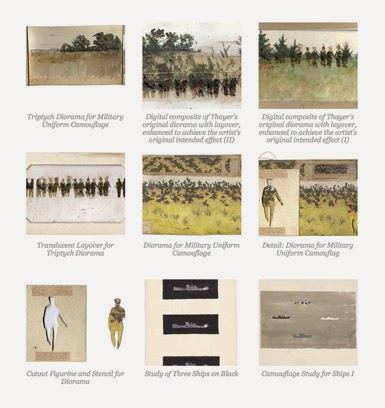 Above Title slide for an illustrated lecture on Abbott Handerson Thayer in relation to nature, conservation, and wildlife preservation, presented on March 28, 2014, at a conference titled SUSTAIN: Nourishing Practices in Art and Design at St. Ambrose University in Davenport IA.
Above Title slide for an illustrated lecture on Abbott Handerson Thayer in relation to nature, conservation, and wildlife preservation, presented on March 28, 2014, at a conference titled SUSTAIN: Nourishing Practices in Art and Design at St. Ambrose University in Davenport IA.•••
Anon, from a brief news article titled "Competent Critic" in the Pittsburgh Press, July 13, 1912—
An art student was copying one of Abbott H. Thayer's paintings at the Metropolitan Museum of Art one day when a plainly dressed man, who looked as if he might be a mechanic, approached and, posting himself at the young man's elbow, watched him as he labored over his subject.
"You've got the angle of the mouth wrong, and the left eye too oblique," remarked the man decidedly.
The student took no notice of the unsolicited criticism.
"There is too much yellow in your flesh tint," continued the man.
Still no reply from the student, who ostentatiously slapped on more yellow in the highlight on the nose.
"Did you hear what I said?" questioned the man.
"Yes, I heard," responded the student, turning and frowning at his modest looking critic. "What do you know about it anyway?"
"I ought to know something about it," was the smiling response. "It was I who painted the picture."


